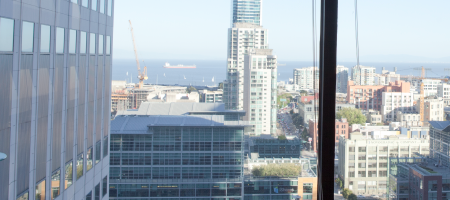A collection of copyright cases published in 2020 produced new insights while at the same time faithfully “reproducing” time-honored legal principles. Here are three worth putting on display, if not bringing back for another performance:
In Solid Oak Sketches v. Visual Concepts the plaintiff, owner of various tattoo designs inked on high-profile professional basketball players, sued the maker of the sports video game NBA 2K because the tattoos, as in real life, appeared on the players in the game. The court rejected the claim, not for a technical foul, but based upon commonsense principles applied to the situation. The court found that there was an implied nonexclusive license to reproduce and display the tattoos that were now part of the players’ likenesses. The license was deemed granted to both the players and to others, like the defendant, who sought to present the players as they appeared. Any contrary holding would invite an absurd result such that, by consenting to being tattooed, players themselves would be constrained in how they could appear, be photographed, or depicted as they are in public life.
The case of Cohen v. G&M Realty involved an area of copyright law that, since becoming effective in 1990, only sparingly has been the subject of published decisions – the Visual Artists’ Rights Act, or “VARA.” (NB: OW&E has been actively involved in such cases for the past 25 years). Under VARA an artist can prevent or sue for the modification, mutilation, or destruction of his or her original work of art since destruction of a work, for example, existing in a single copy, can cause damage to the artist’s reputation by physically diminishing the artist’s legacy. Murals, too, are protected. If a building owner desires to have a mural removed, under VARA the owner must notify the artist and provide 90 days in which to remove the mural from the building, upon which title to the mural passes back to the artist.
In Cohen, also known as “the 5 Pointz case,” describing the location of a famous series of buildings with graffiti art in New York, the murals had been installed with the consent of the owner. The works were managed and curated, and much of it was highly original and striking. Then, virtually without warning, the owner made his move to proceed quickly with development of luxury apartments. He failed to give the required 90-day notice and proceeded to whitewash 200,000 square feet of art.
The trial court met with challenges in determining the value of each of the 45 works eligible under VARA, i.e., works that were “of recognized stature,” a necessary finding for protection. Nevertheless, the federal appellate court affirmed the finding that the owner had acted willfully, if not committing “an act of pure pique and revenge,” justifying an alternative award of statutory damages in the maximum amount ($150,000) for each of the 45 artists for a total of $6,750,000, plus a significant award of attorneys’ fees and costs.
In Skidmore v. Led Zeppelin the Ninth Circuit Court of Appeals ended the long-running case where the successors to the band Spirit sued the famous British band over the intro to the anthemic 1971 megahit, “Stairway to Heaven.” In affirming that there was no infringement, the court underscored that compositional ideas, concepts, and common elements by themselves are not protected expression under copyright law. They are “building blocks” that must be available for others to use and build on.
The ruling reinforced bedrock copyright policy, having application far beyond music. The vision of the Founding Fathers for copyright protection was inscribed in the Constitution – “To promote the progress of science and the useful arts” by granting copyright protection for “limited times.” But the goal was not just to grant monopolies for original works for the life of the copyright (currently the lifetime of the creator plus 70 years). To the extent a first author makes use of or introduces unprotectable ideas, concepts, and common elements in his or her work, society as a whole is benefited, and science, art, and culture are promoted when other authors, long before expiration of the first author’s copyright, are free to make use of building blocks used in order to create new works for the use and enjoyment of all.
— Contributed by Larry Townsend
